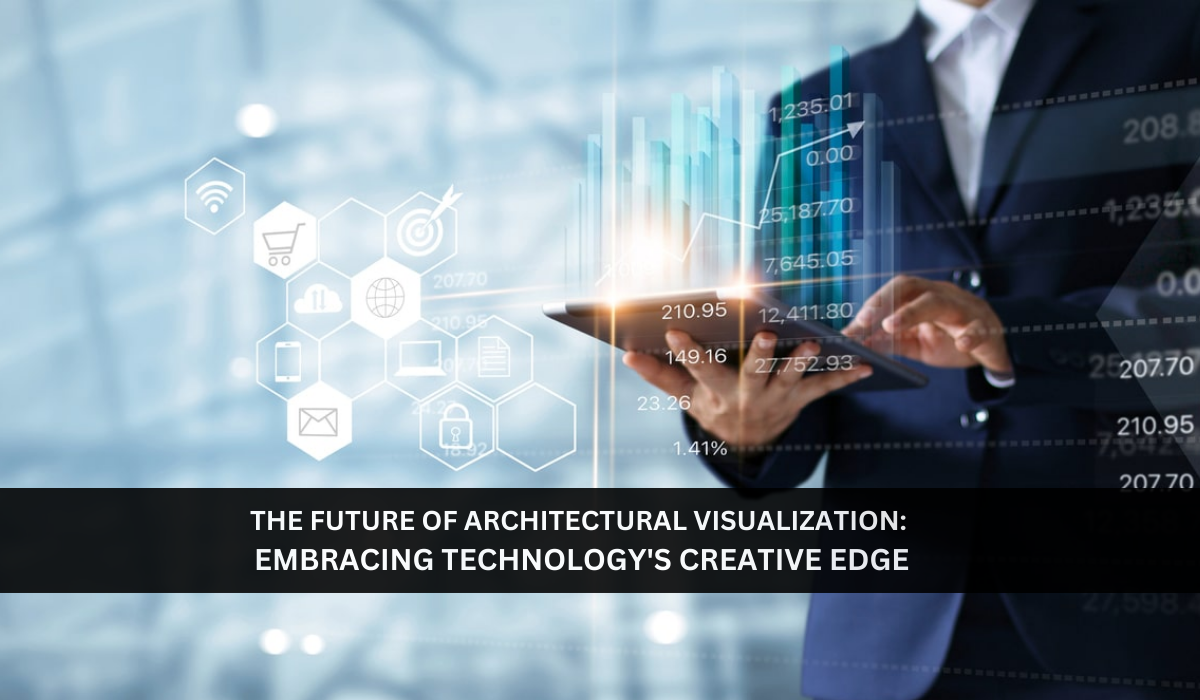The world of architectural visualization is on the brink of a major transformation. As technology continues to advance at an unprecedented pace, architects and designers are finding innovative ways to push the boundaries of creativity. The future of architectural visualization holds immense potential, as it embraces the cutting-edge tools and techniques that technology has to offer.
In this blog, we will explore the exciting developments that lie ahead, and how they are set to revolutionize the way we perceive and experience architectural designs. So, let us see what the future of architectural visualization holds for us.
Heading into the Digital Frontier
The advent of technology has catapulted architectural visualization into an entirely new dimension. From hand-drawn blueprints to complex digital renderings, the metamorphosis has been awe-inspiring. But what’s fueling this rapid transformation? Let’s dig in.
Unveiling the Power of 3D Rendering
Picture this: a three-dimensional, photorealistic representation of an architectural masterpiece that’s yet to be built. That’s the magic of 3D rendering. This technology employs advanced algorithms to craft lifelike visuals that bring designs to life even before the foundation is laid. It’s like peeking into the future while still in the present!
Technology and Creativity: A Dynamic Duo
Technology isn’t replacing human creativity; it’s amplifying it! The synergy between technological advancements and artistic ingenuity is akin to a well-choreographed dance.
Virtual Reality (VR) Walkthroughs: Step Inside Your Imagination
Say goodbye to the days of merely looking at architectural drawings. With Virtual Reality (VR) walkthroughs, you can now step right into your creation. It’s more than just visualizing; it’s experiencing. Imagine wandering through the corridors of a building that exists only in your mind – that’s the power of VR.
Augmented Reality (AR): Overlaying Dreams onto Reality
Augmented Reality (AR) takes the real world and overlays it with your architectural dreams. Point your device at a construction site, and voilà! The planned structure is seamlessly integrated into the actual surroundings. It’s like a digital wizard sprinkling enchantment on the physical world.
FAQs About the Future of Architectural Visualization
FAQ 1: How does architectural visualization benefit the design process?
Architectural visualization acts as a creative compass, guiding architects and clients alike. It helps in spotting design flaws, experimenting with different aesthetics, and ensuring that everyone is on the same page before construction begins.
Answer:
By visualizing the end product, architects can make informed decisions, saving time, effort, and resources. Clients can better understand the final outcome, making communication smoother and reducing the likelihood of misunderstandings.
FAQ 2: Are traditional hand-drawn blueprints becoming obsolete?
In an ever-evolving digital landscape, traditional blueprints are evolving, not becoming obsolete. While digital visualization tools offer unparalleled advantages, hand-drawn sketches still play a crucial role in the initial brainstorming and ideation stages.
Answer:
Hand-drawn sketches possess a unique charm and allow architects to quickly jot down creative ideas. They’re an essential part of the design journey, working harmoniously with digital tools to create a holistic design experience.
FAQ 3: How is virtual reality reshaping client presentations?
Virtual reality has revolutionized client presentations. Instead of static images, clients can now walk through their future spaces, experiencing every nook and cranny before construction even begins.
Answer:
This immersive experience fosters a deeper emotional connection with the design, enhancing client satisfaction. It bridges the gap between the architect’s vision and the client’s expectations, resulting in more accurate and fulfilling outcomes.
FAQ 4: What role does real-time collaboration play in architectural visualization?
Real-time collaboration is a game-changer in architectural visualization. Multiple stakeholders, regardless of their physical locations, can collaborate simultaneously on a digital platform, fostering synergy and speeding up decision-making.
Answer:
This collaborative approach minimizes delays caused by communication gaps and streamlines the design process. Architects, clients, engineers, and other professionals can contribute their insights, leading to a more well-rounded and innovative end product.
FAQ 5: How secure is sensitive project data in the realm of digital visualization?
Data security is a paramount concern in the digital age. Advanced encryption and secure cloud-based solutions are employed to protect sensitive project data, ensuring that intellectual property remains confidential.
Answer:
Architects and firms prioritize the protection of their client’s information. Cutting-edge cybersecurity measures to safeguard against unauthorized access, giving clients peace of mind while embracing the benefits of technology.
Embracing Change: The Conclusion
As we traverse the landscape of architectural visualization’s future, one thing becomes abundantly clear: the creative edge that technology provides is reshaping the very essence of design. The days of static blueprints are fading, replaced by dynamic, immersive experiences that bridge the gap between imagination and reality. The blend of human insight and technological prowess is painting a canvas of endless possibilities.
So, architects, clients, and Best Digital Marketing Agency in Australia alike buckle up and embrace this exhilarating journey into the future of architectural visualization. The only limit is the sky, and even that might just be a stepping stone toward new horizons in the realm of design.
Remember, the future is not a distant destination—it’s the path we pave today, one pixel, one line, and one idea at a time.





